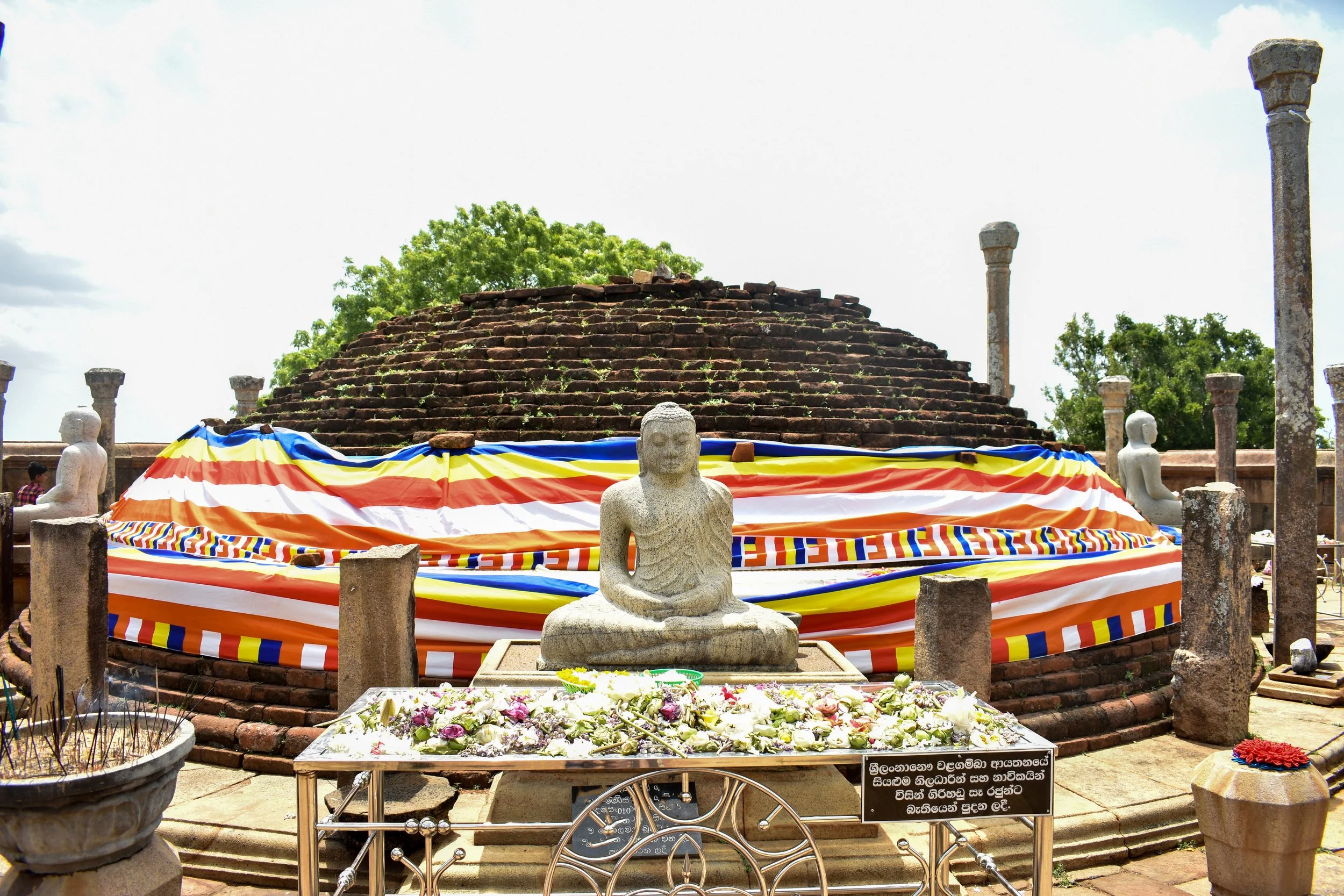Girihandu Seya
At a Glance
The Girihandu Seya is said to be the oldest stupa on the island, erected by the Buddha's first disciples, the merchants Trapusa and Bahalika. These two are said to have encountered the Buddha just after his awakening while he was still seated under the Bodhi Tree. There, the Buddha gave them hair relics, which Sri Lankans claim were transported to their island and enshrined in this stupa.
The Story
Girihandu Seya (also known as Nithupathpana Vihara) is an ancient stupa situated in Thiriyai, near the coast about 47 km to the north of Trincomalee. The temple is also claimed to be the first Buddhist stupa on the island.
According to the 13th century text, the Pujawaliya, it was erected by two merchants Trapusa and Bahalika. (Note there are many alternative spellings for the merchants’ names) The first account of Trapusa and Bahalika appears in the Mahavagga of the Vinaya and the Nidanakatha. The merchants offer the Buddha his first meal after enlightenment and take refuge in the Dharma, hence becoming the Buddha's first disciples. In response to their request for something to venerate, the Buddha gives them hairs from his head. (Note that other countries, including Burma and Balkh were also said to have stupas containing these hair relics). It is possible that the Pujawaliya used the now-missing Kesadhatuvamsa, Chronicle of the Hair Relic, as a source for its material, but although the text is cited in the Culavamsa, its precise contents are still a mystery.
The names of the two merchants are recorded in a rock inscription found in the Vihara premises. According to the inscription, Girihandu Seya was built by the guilds of merchants named Trapassuka and Vallika. Atop a small hill, we find a circular vatadage surrounding the stupa. It seems that the original stupa was smaller in size and was enlarged in the 8th century CE. The concentric circles of stone pillars are similar to the Thuparama and Lankarama Stupas at Anuradhapura.
Below the vatadageya are ruined remains of monastic structures, stone pillars, flight of steps, ponds, and remains of a stone bridge. Along the hillside we will come across rock caves, two of which contain Brahmi inscriptions, dating to approximately the first century BCE-CE. 200 feet south of the stupa there is another rock inscription engraved with eleven lines of Sanskrit script. These begin with the description of a shrine named Girikandiya caitya. It praises the shrine as an abode of Avalalokitesvara, indicating its importance as a Mahayana place of devotion. The last lines of the inscription refer to the founding of the shrine by the guild of the merchants Tapussa and Bhalluka.
According to the Pujawaliya, they arrived at the place called Girihandu and placed the casket containing the hair relics on the hilltop and went to find food. When they returned, they were unable to lift the relic casket from the spot. Defeated, they offered homage and enclosed the casket in a heap of stones, and returned to sea. This inscription states that it was recorded in the 23rd year of the reign of king Silamegha, Lord of Simhala. This monarch has been identified as Aggabodi VI (r. 741-781 CE) who sent envoy the Mahayana teacher Amoghavajra to China in 742 CE
Near the shrine precinct is the Nithupathpana tank which is said to have been constructed in the 1st c. CE, attesting to the antiquity of the site.
Coordinates
8.8704°N 81.0073°W


